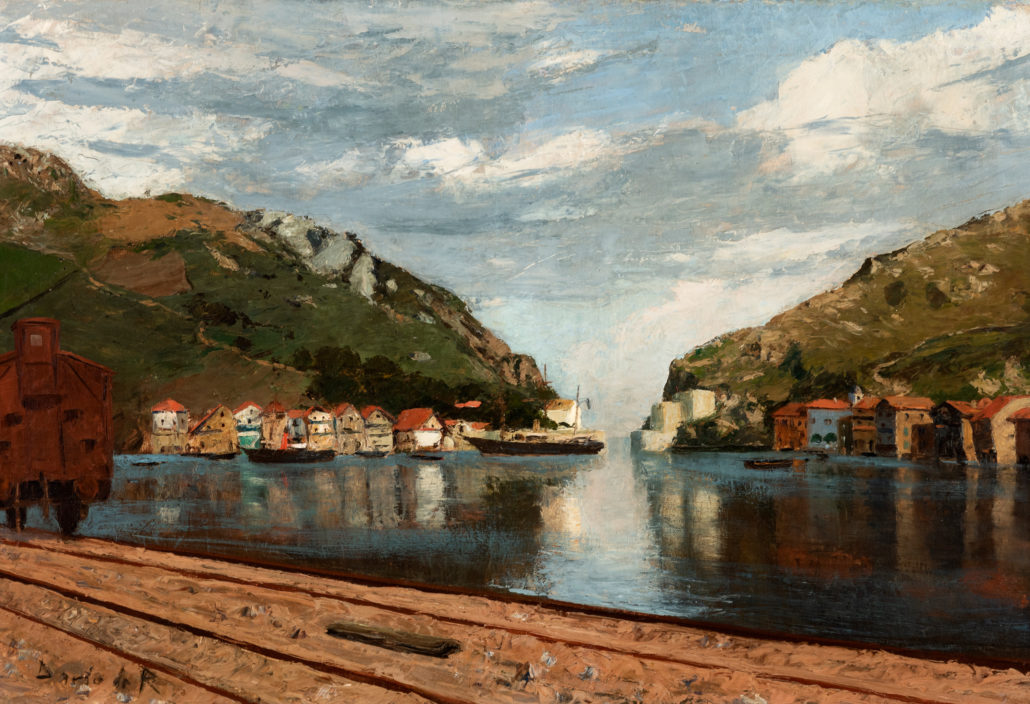Darío Regoyos, his legacy in Basque landscaping
At the end of the 19th century, while different experimental artistic tendencies applied to landscape painting were making their way in Paris, Vienna or Brussels (impressionism, pointillism, etc.), in much of the Spanish territory art continued to be subjected to the rigid academy. In this sense, In the Basque context, the figure of Darío de Regoyos would be essential for new trends to penetrate further here in the Pyrenees.
Born in Asturias, Regoyos, despite his cosmopolitan spirit and having been the only Spaniard who had been part of the pointillist group led by Seurat, always felt a singular attachment to the Basque Country . Together with Adolfo Guiard, contributed to Bilbao’s effervescence as an emerging artistic center . They opened a path, in the field of landscaping and properly Basque themes, which artists such as Ignacio Zuloaga, Manuel Losada and Francisco Iturrino continued.
A tireless traveler, he lived in Brussels for many years (where he frequented the circle of “Les Vingt”), but the Cantabrian light attracted him like no other, which is attested in the captivating paintings made between Irún and San Sebastián, around Las Arenas and Durango. Although he did not stop participating in exhibitions with the Belgian pointillist group, from 1884 he settled in the Basque Country, at which time he made the oil painting “La baie de Pasajès (PaysBasque)”
The photogenic bay of Pasaia was portrayed from different angles by the Asturian master. In this painting, which is currently being auctioned at Setdart, the houses lined up on the mountainside seem to float on the arm of the sea. The perspective, from the shore, also includes the railway track, whose last car we see moving away. The timeless cadence of those ancient peoples and the time of the machine overlap, they coexist in harmony.
Regoyos did not tire of painting the port of Oarsoaldes and its surroundings. “La baie de Pasajès” (with which he participated in a Belgian exhibition) is close in period and subject to titles such as “Bulls in Pasajes de San Juan” (kept in the Bilbao Fine Arts Museum) and “Efecto de noche en Tickets”. The painting is signed with the form “Darío de R.”, probably because in those years Regoyos was known in the Belgian art scene as “Don Darío”.
There will be many artists (Basques and from other parts of Spain) who will paint the beautiful bay: Eugenio Arruti, José Salís, Pedro Venancio Gassis, Joaquín Sorolla, Ascensio Martiarena, among others.
The Basque landscape is scrutinized to the core by Regoyos, broken down in its formal essence and in its most intense colors. However, in this landscape of the bay, the pointillism of his Belgian period has been slightly softened, reaching a synthesis of its own that is difficult to catalog within a movement.
Both his landscapes and his paintings of Basque dances, with a schematic line and energetic brushstroke, will leave an indelible mark on Basque painting, having disciples such as Manuel Moreno and Enrique Renteria, who, from generation to generation, reach the present.



